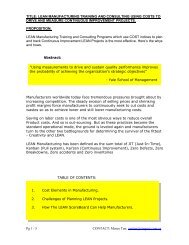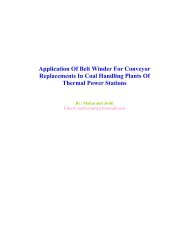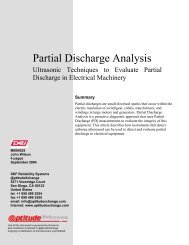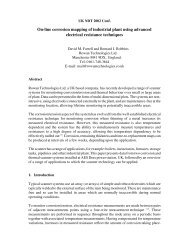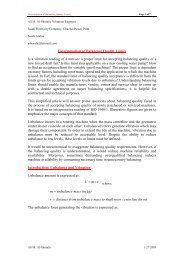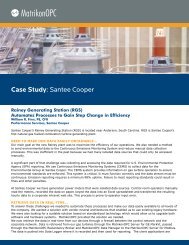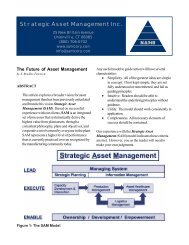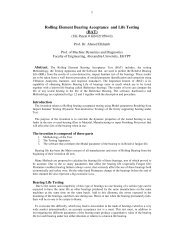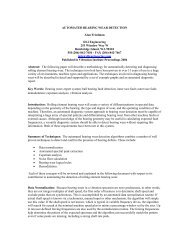A Re-Examination of Failure Analysis and Root Cause Determination
A Re-Examination of Failure Analysis and Root Cause Determination
A Re-Examination of Failure Analysis and Root Cause Determination
- No tags were found...
Create successful ePaper yourself
Turn your PDF publications into a flip-book with our unique Google optimized e-Paper software.
31<strong>Re</strong>sultsThe simulation found that preloading (torquing, putting the screws on tightly) the capscrews increased the stress resistance <strong>of</strong> the system <strong>and</strong> consequently, the service life<strong>of</strong> the system would lengthen. The table on the following page shows the stressresistance <strong>of</strong> the 8 cap screws assuming preloading conditions. The best result waswith 90 ksi preloading. The difference can be explained by alternating stresses that arepresent with <strong>and</strong> without preloading. Sufficient contact pressure prevents alternatingstress <strong>and</strong> thus, a higher preload can withst<strong>and</strong> greater stress.IMPORTANT FAILURE ANALYSIS PRINCIPLES REPRESENTEDIN THIS CASE HISTORYFinite element analysis showed that a very simple adjustment (tightening the screws inthe assembly) would solve a vexing problem without a major redesign <strong>of</strong> the system.Case History #6. Aircraft Engine <strong>Failure</strong>The fan section <strong>of</strong> a turbine aircraft engine contains fanblade separators known as annulus fillers, or simply asspacers. The material specification <strong>of</strong> an annulus filler isusually 7075 T56 aluminum alloy with a painted coating.The highlighted area in the drawing at left represents the



